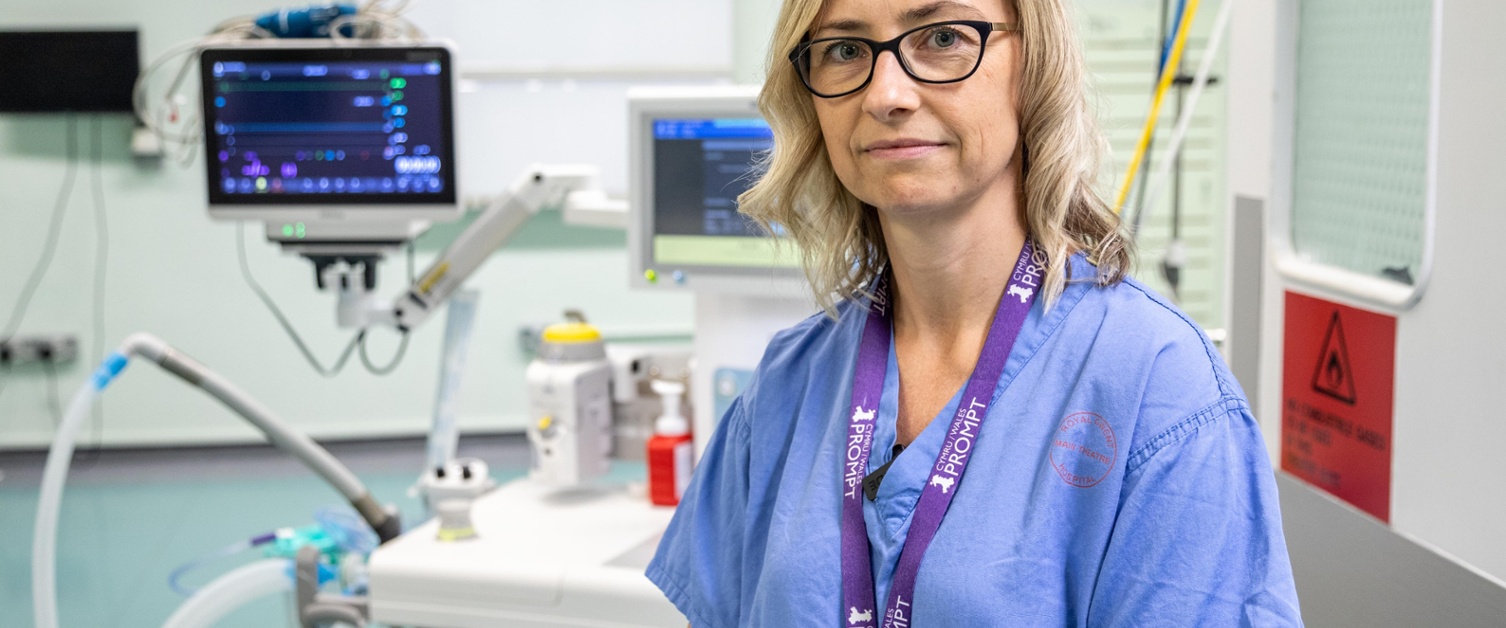Anaesthetic Gas Change to Save 900 tonnes of CO2 equivalent per year

Wednesday 10th January 2024
A new way of delivering an anaesthetic gas within hospitals in Gwent has resulted in a significant reduction in Aneurin Bevan University Health Board’s greenhouse gas emissions.
Nitrous oxide gas is historically used as a common anaesthetic gas within the delivery of healthcare, notably within theatres areas. A project carried out by the Clinical workstream of the health board’s Decarbonisation Programme Board found that there was significant wastage secondary to small leaks in the ageing pipelines and out of date gas cylinders.
Dr Jenna Stevens, Consultant Anaesthetist, Sustainability Lead and Clinical Lead for the Decarbonisation Board at ABUHB, said: “The clinical use of Nitrous oxide over the last 10 to 15 years has dramatically reduced. What we were finding was that even though our use had declined, we were still purchasing a significant quantity of nitrous oxide.”
Financially the decommissioning of the piping system and large cylinder manifolds represents a saving of £14,500 per year. But its environmental impact is much greater, estimated at 900 tonnes of carbon dioxide equivalent per year, which equates to over 2.2 million miles driven by a car.
Working with Estates & Facilities, the team have been able to decommission these systems at Ysbyty Ystrad Fawr, Nevill Hall Hospital, St Woolos Hospital and Royal Gwent Hospital. Smaller, more mobile cylinders are now in place at all of these sites, providing the gas where necessary and reducing emissions and waste.
Healthcare is a major contributor to Wales’ carbon footprint, and until recently a massive 5% of all healthcare-related global warming in Wales came from inhaled anaesthetic agents, used to maintain anaesthesia during surgery.
It’s a part of efforts by the Anaesthetic team at Aneurin Bevan University Health Board (ABUHB), exploring methods to minimise pollutive gas wastage. One major culprit, was an anaesthetic agent called desflurane which had the global warming potential (GWP) of 2,540 times that of carbon dioxide. The use of desflurane across the health board was stopped in 2022.
Nitrous oxide has a GWP of 298 times that of carbon dioxide. It also remains in the atmosphere for 120 years and with this recent decommissioning, the hope is to continue to transition to a culture where gases with low global warming potential are prioritised without affecting or, or even improving, patient care.
Dr Jenna continued: “It’s great to be able to make these changes. It’s a team effort. I look forward to carrying on with our efforts to as a green a Wales as we can and reduce our carbon footprint as a health board.”
The team now plan to look into ways to reduce the impact of Entonox wastage. Last year, ABUHB contributed 1500 tonnes CO2e through the purchase of Entonox alone. Entonox presents a much bigger challenge given its use within many areas within the health board meaning continued teamwork will need to be achieved to realise a further emissions reduction.